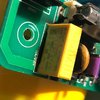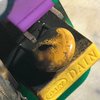Hi. First post here. Start off let me tell you I am a licensed electrician but not too much experienced with electronic boards. Get right to the point. Purchased an expensive massage chair in an auction and was extremely excited to receive today. But, when I finished the set-up no power. Took out fuse, blown. Now this kinda scared me because why was it blown to begin with? So I just installed another glass time delay fuse and and flash boom. So took apart didn't see any signs of any shorts nothing on wire but looked closely at where the flash came from and it was directed in front of power cord connection at the capacitor. Any suggestions much appreciated thank you?
-
Categories
-
Platforms
-
Content







